Modular Workstation in Tempe, AZ: Revolutionizing Office Spaces
From the Modern Cubicle to the Modular Workstation in Tempe, AZ: Revolutionizing Office Spaces
Welcome to the future of office design! The landscape of workplace environments is undergoing a significant transformation, moving away from the rigid, isolated confines of traditional cubicles towards the flexible, dynamic world of modular workstations. This shift is more than just a trend—it’s a revolution that’s redefining how we think about productivity, collaboration, and employee well-being. In this article, we’ll delve into the evolution from the classic cubicle to the innovative modular workstation, with a special focus on how businesses in Tempe, AZ, are at the forefront of this exciting change. Whether you’re an entrepreneur looking to inspire your team, a business owner aiming to optimize office space, or an office manager seeking to enhance the work environment, understanding this shift is crucial. Join us as we explore the benefits, design principles, and real-life examples of modular workstations, and discover how embracing this modern approach can create a more dynamic, productive, and sustainable workspace for your business.

Team Conference Room
The Evolution of Office Spaces: A Brief History
Early Office Designs and the Birth of the Cubicle in the 1960s
In the early 20th century, office designs were predominantly influenced by the industrial age’s principles of efficiency and productivity. Large, open rooms with rows of desks were the norm, resembling factory floors more than modern workplaces. This layout, while maximizing the use of space, often led to noisy and distracting environments. The 1960s marked a pivotal change with the introduction of the cubicle by Robert Propst, a designer for Herman Miller. Propst’s invention, known as the “Action Office,” aimed to provide employees with more privacy and a personal workspace while still being part of a larger office environment. The cubicle’s modular design allowed for easy reconfiguration, offering a flexible alternative to the rigid rows of desks that preceded it.
The Drawbacks of Cubicles: Lack of Collaboration, Isolation, and the Stereotypical “Cubicle Farm”
Despite their initial promise, cubicles soon became synonymous with monotony and isolation. The very design that intended to offer privacy inadvertently led to a sense of seclusion among employees. The term “cubicle farm” emerged, highlighting the vast expanses of identical, box-like workspaces that filled many offices. These environments often stifled creativity and hindered spontaneous collaboration, as the physical barriers limited interaction. Moreover, the lack of natural light and the repetitive nature of cubicle designs contributed to a dreary and uninspiring atmosphere, affecting employee morale and productivity. The drawbacks became increasingly apparent, prompting a reevaluation of office design in search of more engaging and dynamic solutions.
The Shift Towards Open Office Plans in the 2000s and Their Challenges
The turn of the millennium saw a dramatic shift in office design philosophy with the rise of open office plans. Companies like Google and Facebook popularized the concept, promoting open spaces to foster collaboration, innovation, and a sense of community. The walls came down, literally, as businesses embraced large, communal workspaces that aimed to break down silos and encourage interaction. However, the open office plan was not without its challenges. While it facilitated better communication, it also introduced a host of new issues, such as increased noise levels, lack of privacy, and potential distractions. Employees often found it difficult to concentrate in such an environment, leading to a mix of positive and negative experiences. As a result, businesses began to seek a balance, blending the benefits of both private and open workspaces, paving the way for the modern modular workstation.
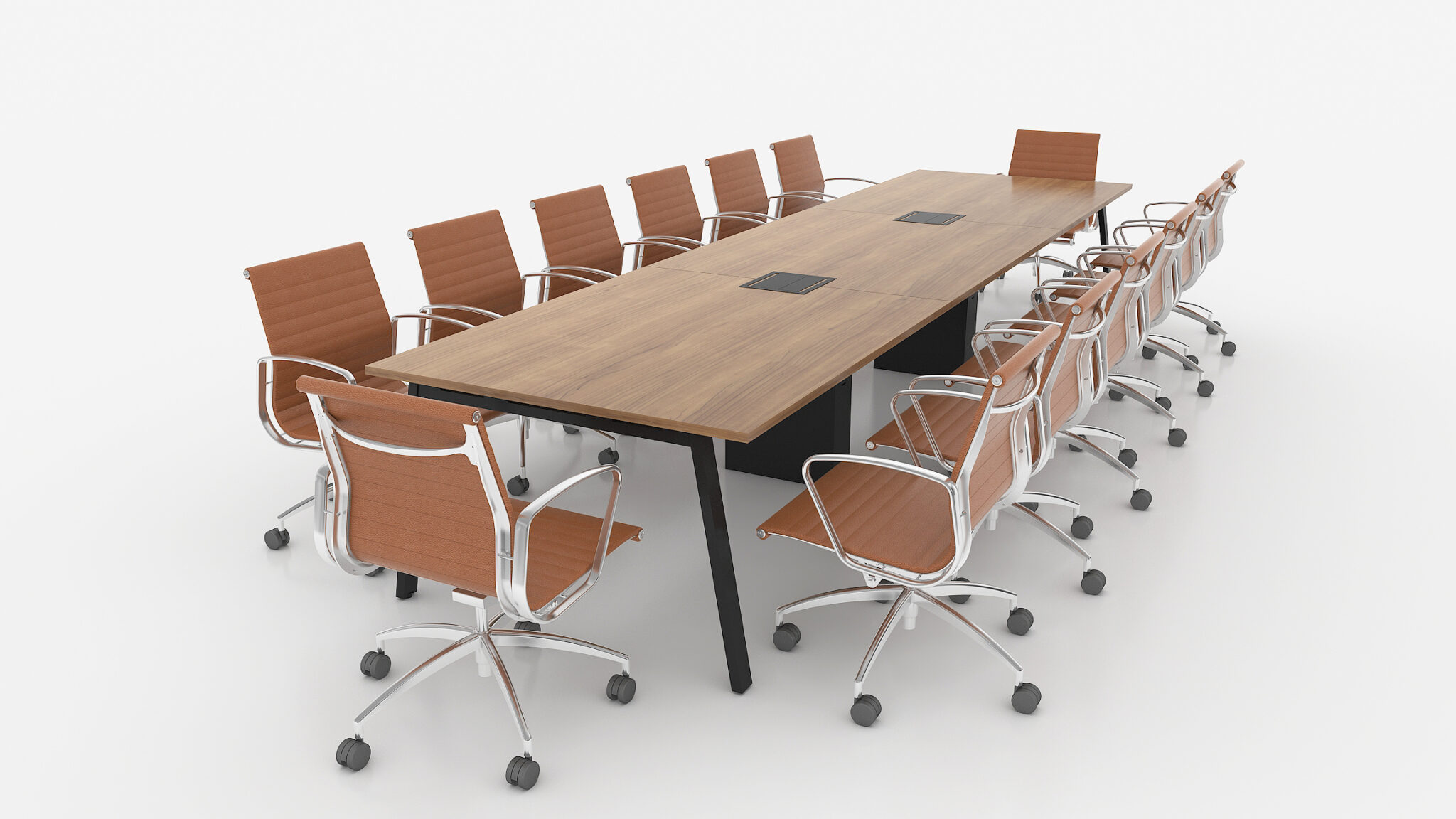
Stylish office chairs for businesses
Why Modular Workstations Are the Future
Definition and Key Features of Modular Workstations
Modular workstations represent the next evolution in office design, combining the best aspects of both open and private office layouts. These workstations are characterized by their highly adaptable and customizable components, which can be rearranged or reconfigured to meet the changing needs of a business. Key features include movable partitions, adjustable desks, integrated storage solutions, and smart technology integrations. This flexibility allows for the creation of various workspace configurations, from individual focus areas to collaborative zones, ensuring that the office environment can quickly adapt to different tasks and team dynamics. The modular approach not only maximizes the use of space but also enhances functionality, making it a versatile solution for modern workplaces.
Benefits Over Traditional Cubicles: Flexibility, Customization, and Improved Aesthetics
Compared to traditional cubicles, modular workstations offer numerous advantages that make them more suitable for today’s dynamic work environments. Firstly, their inherent flexibility allows businesses to easily reconfigure the workspace to accommodate growth, shifts in work styles, or new projects. This adaptability is crucial in a fast-paced business world where change is constant. Secondly, modular workstations provide a high degree of customization, enabling companies to design spaces that reflect their brand identity and cater to the specific needs of their employees. This can include incorporating ergonomic furniture, collaborative areas, and quiet zones, thereby enhancing overall productivity and job satisfaction. Lastly, the improved aesthetics of modular workstations cannot be overlooked. With sleek, modern designs and the use of high-quality materials, these workstations contribute to a more inspiring and visually appealing office environment, which can positively impact employee morale and attract top talent.
Case Studies of Successful Modular Workstation Implementations in Tempe Businesses
Several businesses in Tempe, AZ, have successfully adopted modular workstations, reaping significant benefits from this modern approach to office design. For instance, a leading tech startup in the area revamped its office space with modular furniture, resulting in a more collaborative and agile work environment. The flexible setup allowed the company to quickly adapt to its rapid growth and changing project needs, significantly boosting team productivity and innovation. Another example is a well-known marketing agency in Tempe that transitioned from traditional cubicles to modular workstations. The agency reported increased employee satisfaction and engagement, thanks to the improved work environment that offered both collaborative spaces and private areas for focused tasks. These case studies highlight how modular workstations can transform office spaces, enhancing both functionality and aesthetics, and ultimately driving business success.
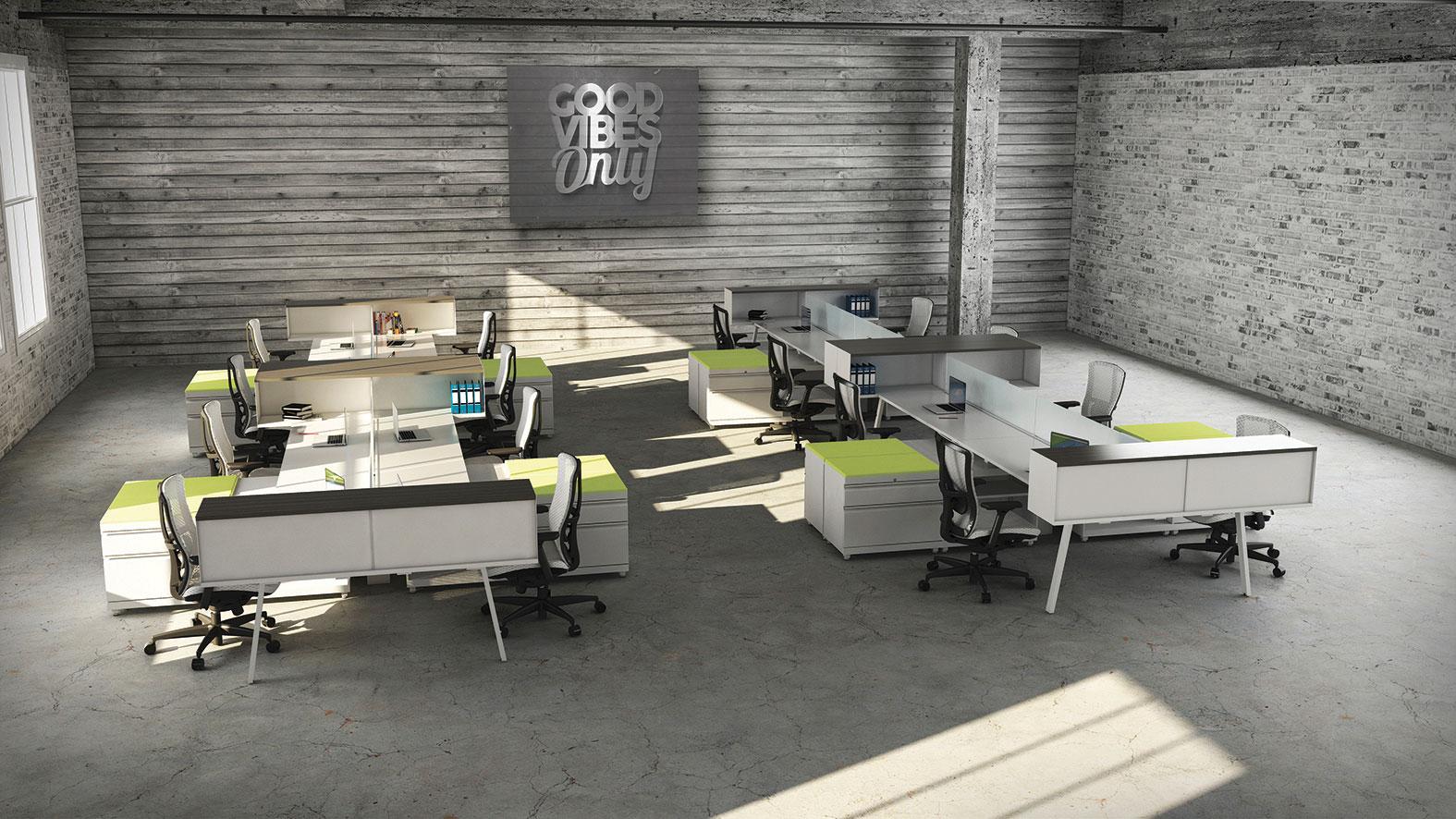
Open Plan Office with Desk and chairs
The Business Benefits of Modular Workstations
Enhancing Employee Collaboration and Creativity
One of the most significant advantages of modular workstations is their ability to enhance employee collaboration and creativity. Traditional office setups, with their rigid and isolated cubicles, often stifle spontaneous interactions and idea-sharing among employees. In contrast, modular workstations are designed to foster open communication and teamwork. By incorporating movable partitions, collaborative zones, and flexible seating arrangements, businesses can create an environment that encourages employees to engage with one another more freely. This dynamic setting not only facilitates better teamwork but also sparks innovation, as employees from different departments or teams can easily come together to brainstorm and solve problems. The result is a more vibrant and creative workplace where ideas flow more naturally and projects progress more smoothly.
Boosting Productivity Through Ergonomic and Adaptable Designs
Modular workstations are not just about flexibility; they also prioritize ergonomics and adaptability, which are crucial for boosting productivity. Ergonomic designs ensure that employees have comfortable and healthy workspaces, reducing the risk of physical strain and related health issues. Adjustable desks, ergonomic chairs, and customizable workstation setups allow employees to personalize their work environment to suit their needs, leading to greater comfort and efficiency. Moreover, the adaptability of modular workstations means that the office layout can be quickly reconfigured to support different types of work, from focused individual tasks to collaborative projects. This adaptability helps to minimize downtime and distractions, allowing employees to maintain high levels of productivity throughout the day.
Cost-Effectiveness and Ease of Reconfiguration for Growing Businesses
For growing businesses, the cost-effectiveness and ease of reconfiguration offered by modular workstations are major benefits. Traditional office setups can be costly and time-consuming to change, often requiring significant investment in new furniture and extensive office redesigns. In contrast, modular workstations can be easily adjusted and reconfigured as the business evolves. This flexibility reduces the need for frequent and expensive overhauls, allowing businesses to scale their office space efficiently. Additionally, modular workstations are typically designed for durability and longevity, ensuring that businesses get the most out of their investment. By choosing modular solutions, businesses can save on both upfront costs and long-term expenses, making it a smart financial decision that supports sustainable growth.
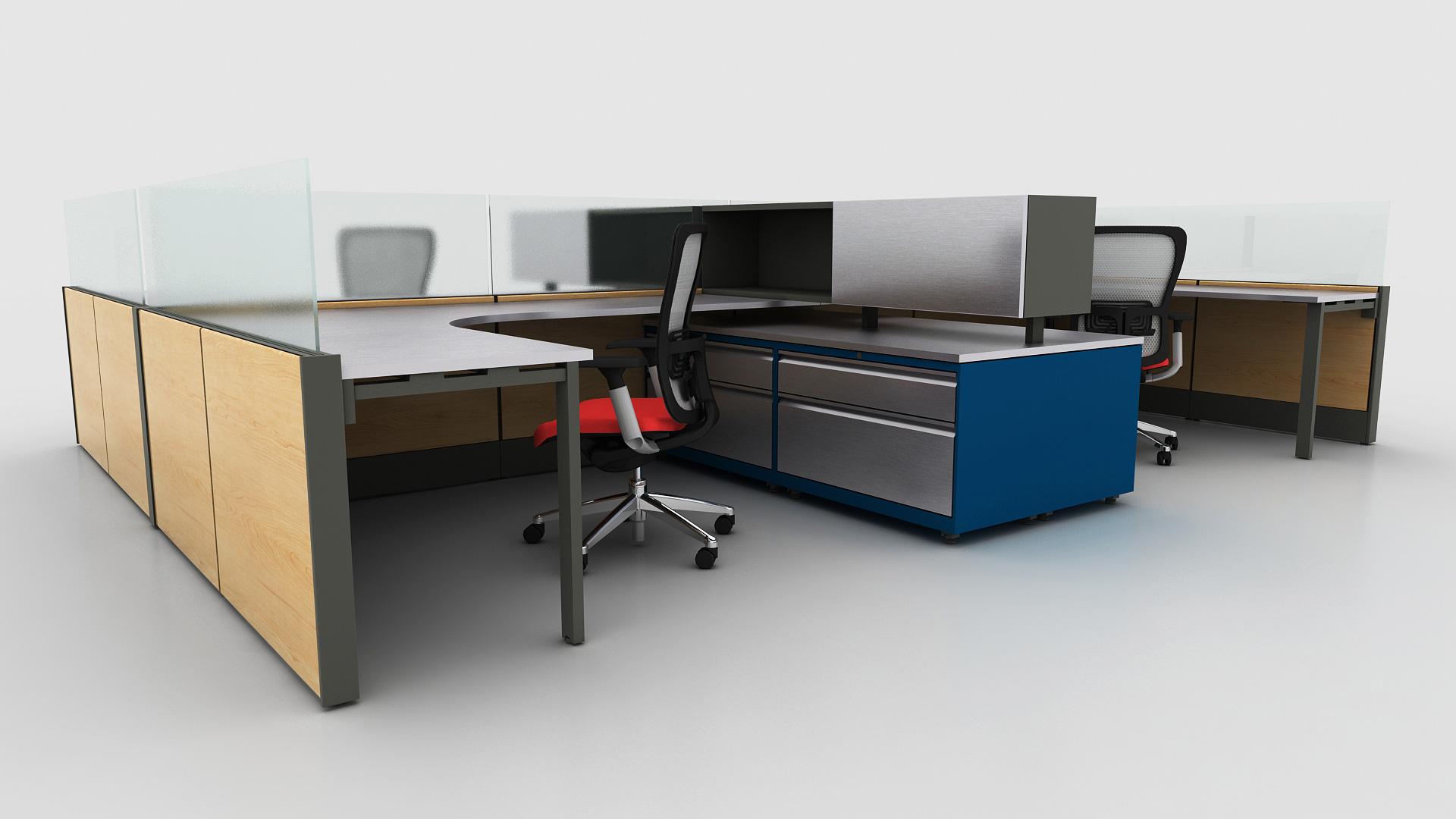
Office cubicle 4 pack with chairs
Technology Integration in Modular Workstations
Importance of Incorporating Technology in Modern Workstations
In today’s fast-paced business environment, the integration of technology into modular workstations is not just a luxury but a necessity. Modern workstations need to support a wide range of technological needs, from basic computing to advanced collaborative tools. Incorporating technology into the design of workstations ensures that employees have seamless access to the tools they need to perform their tasks efficiently. This includes everything from high-speed internet connections to power outlets and USB ports, which are essential for keeping devices charged and connected. By embedding technology into workstations, businesses can create a more streamlined and efficient workflow, reducing the time employees spend on technical issues and allowing them to focus on their core responsibilities.
Examples of Smart Office Technologies: Adjustable Desks, Integrated Power Modules, and Collaborative Software
Smart office technologies are transforming the way we work, making modular workstations more versatile and user-friendly. Adjustable desks, for instance, allow employees to switch between sitting and standing positions throughout the day, promoting better health and increased productivity. Integrated power modules are another key feature, providing easy access to power outlets and USB ports directly at the workstation, which eliminates the need for messy and inconvenient extension cords. Collaborative software, such as project management tools and communication platforms, is also essential in modern workstations. These tools facilitate real-time collaboration and information sharing, enabling teams to work together more effectively, whether they are in the same office or working remotely. By integrating these technologies, businesses can create a more connected and efficient workspace that supports a variety of work styles and needs.
Future Trends: AI-Driven Workspace Management and IoT
Looking ahead, the future of modular workstations will be heavily influenced by emerging technologies such as artificial intelligence (AI) and the Internet of Things (IoT). AI-driven workspace management systems are poised to revolutionize office environments by optimizing the use of space and resources. These systems can analyze data on how workspaces are used and make real-time adjustments to improve efficiency and comfort. For example, AI can adjust lighting and temperature settings based on occupancy and individual preferences, creating a more personalized and comfortable work environment. IoT technology will further enhance modular workstations by connecting various devices and systems within the office. Smart sensors can monitor environmental conditions, track equipment usage, and even manage inventory. This interconnected ecosystem will enable businesses to create highly responsive and adaptable workspaces that can automatically adjust to meet the needs of their employees. As these technologies continue to evolve, modular workstations will become even more sophisticated, offering unprecedented levels of flexibility, efficiency, and comfort.
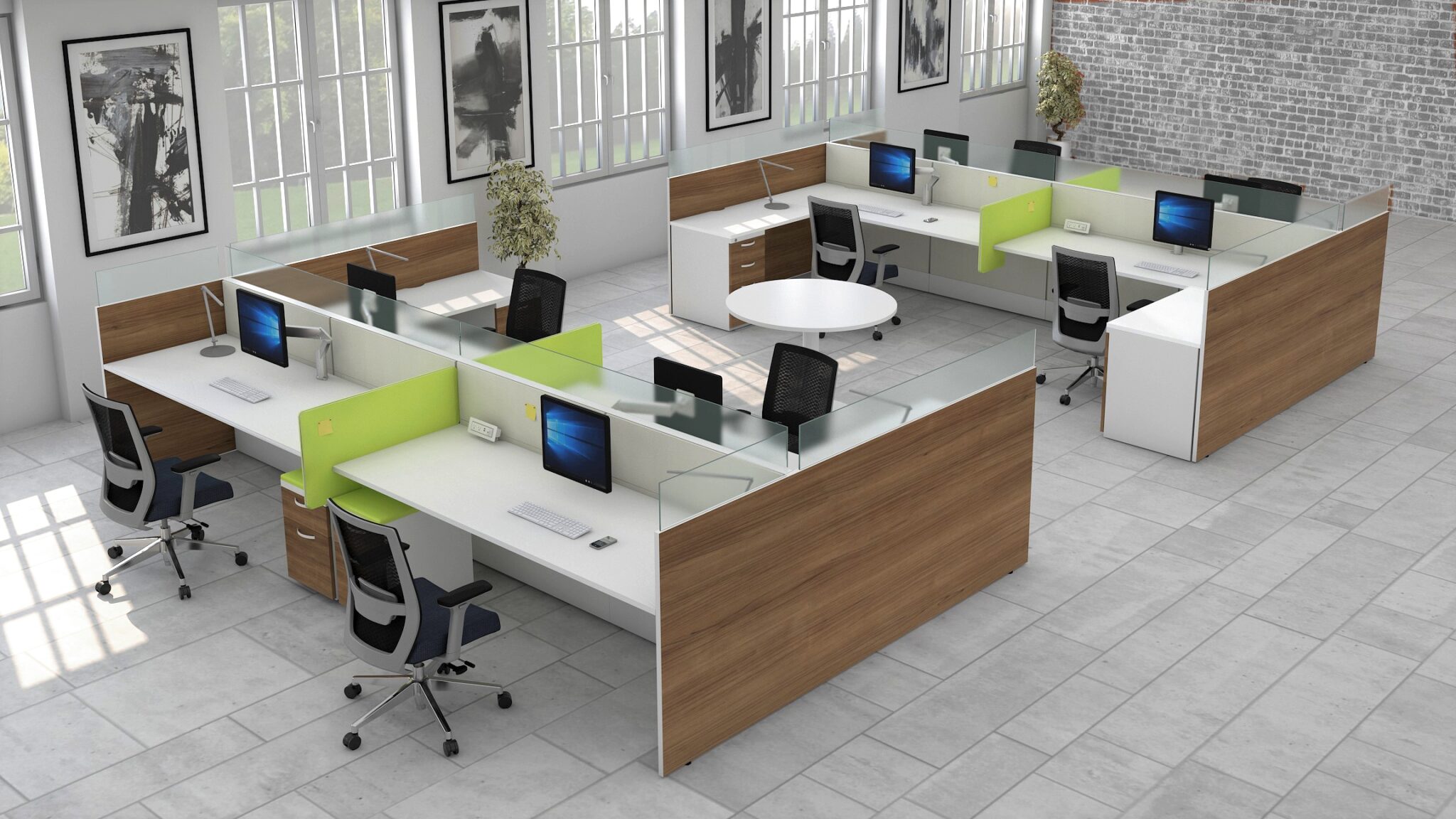
Office cubicles with laminate panels and chairs
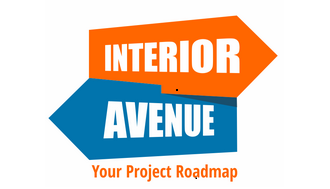

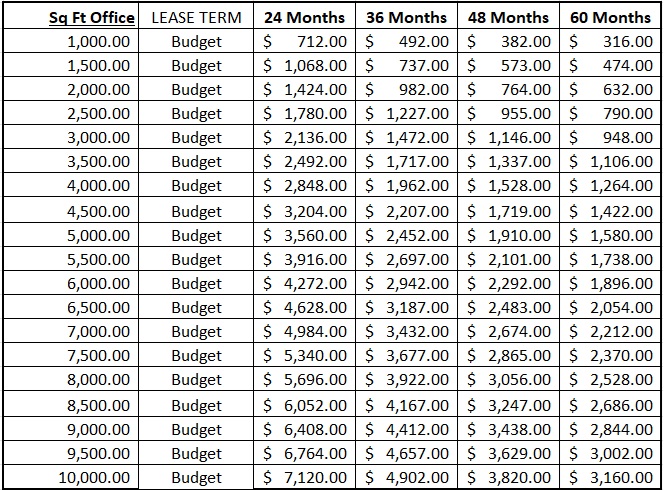




Leave a reply